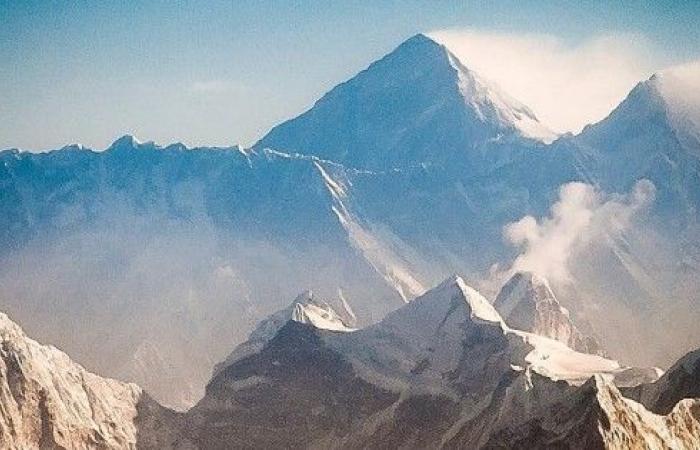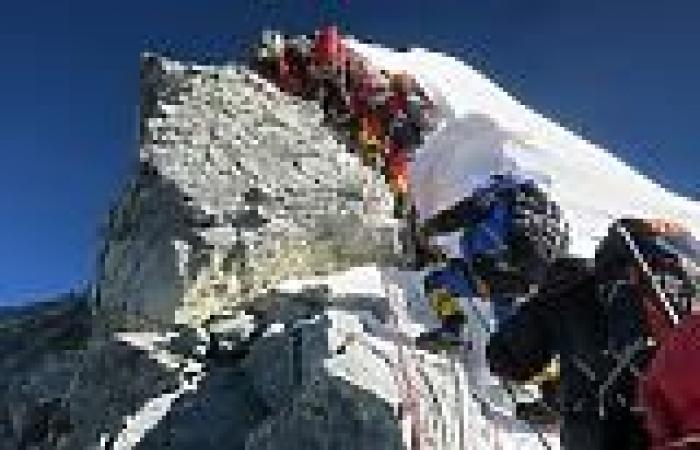17 people may have died on Mount Everest this year, the Himalayan Times reports. Twelve of them have already died, and five climbers – two Nepalese and three foreigners, including the Hungarian Szilárd Suhajda – are officially listed as missing.
A tragic year
The 12th victim was the Canadian Petrus Albertyn Swart, who fell ill above camp 4 on his way to the summit. With the help of the Sherpas, he was able to return to the camp at 7,950 meters, but later, on the way to camp 3, he died. The victims include one Australian, Malaysian, Indian and Moldovan climber.
There is also no trace of Hawari Bin Hashim, a deaf and mute from Malaysia, who disappeared at Camp 4 on May 18 after climbing the summit. Indian-Singaporean Shrinivas Sainis Dattatraya went missing at 8,500 meters, reportedly crashing on the Tibetan side of the mountain. Since May 25, it has not been possible to reach Nepal’s Ranjit Kumar Shah and his Sherpa, Lakpa Nuru.
According to Explorersweb, the number of victims is approaching a new record.
According to their statistics, 17 people lost their lives in 2014 (15 in an avalanche and two due to health problems), and in 2015, an avalanche caused by the Nepal earthquake killed 18 climbers in a camp.
According to sources speaking to the magazine, an extraordinary number of rescue operations had to be launched in the region this year, and not all of them were announced.
According to Australia’s ABC News, twice as many people have lost their lives on Mount Everest this year compared to the previous average. According to the Himalayan database maintained since 1922, the highest mountain in the world has claimed at least 322 deaths so far, i.e. 4.4 deaths per year (taking into account the years when climbers were documented there).
More people trying, more deaths
This statistic marks 2014 as the most tragic year (17 deaths), followed by 1996 (15 victims) and then 2015 (14 victims). The data also show that the number of tragedies has increased significantly since the 1980s – and has remained at a high level ever since – and that the number of deaths per year has risen to 6.4 since the turn of the millennium.
This is obviously related to the fact that the popularity of the extreme challenge has increased, i.e. more and more people are trying to climb Mount Everest. While in the 80s a few hundred people took part in such expeditions every year, in recent years there have been more than a thousand.
According to experts, this has also increased the number of those who do not have enough experience.
All of this may also explain the increasing number of tragedies. According to the Australian newspaper, Nepal has issued more than ever, 478 permits to conquer the peak this year, and including the Sherpas, even more people have taken and are aiming for the peak.
The previous record was registered in 2021, when 408 permits were issued. Alan Arnette, who has already climbed the world’s highest peak four times, called this season chaotic. As he said, seven of this year’s tragedies were caused by altitude sickness, cold or exhaustion.
According to ABC News, however, the fatality rate is not increasing, i.e. the number of deaths per 100 climbers has remained relatively stable in recent years – in fact, according to an American study published in 2020, the rate has remained unchanged since the 1990s, at around one percent.
At the same time, the rate of successful summit conquests has doubled in the last three decades (this does not mean, however, that everyone was able to return from the summit).
Most deaths were due to avalanches and falls. Acute mountain sickness and other diseases, as well as “exposure to the elements” (i.e. extreme lack of oxygen and cold) are also common deaths.
He wrote himself into history
Suhajda Szilárd was one of the most experienced and successful Hungarian climbers: in 2019, he became the first Hungarian to climb the 8,611-meter K2, considered one of the most difficult mountains in the world, without a companion or oxygen tank, and in 2022 he also conquered the 8,516-meter Mt. Lhocsé.
Now he has set his sights on climbing the 8,848-meter Mount Everest, the highest point on Earth, also without supplemental oxygen and Sherpa. No Hungarian has yet succeeded in this.
According to his official Facebook page, he started for the summit on the evening of May 23, at 9:05 PM Nepali time, in perfect weather conditions. He first called the home support team at 08:00 on the 24th, from the top of the so-called Balcony, at 8,450 meters. Then it was moving slowly but steadily.
Suhajda Szilárd was seen at the Balcony twice by a Canadian documentary filmmaker, Elia Saikaly. Referring to the distance traveled between their encounters, he said that the Hungarian climber progressed very slowly.
The Canadian man addressed him, but Suhajda Szilárd did not answer, but continued to climb slowly but steadily.
The second time he called from the foot of the South Peak, at 8,630 meters, at 1:30 PM Nepali time. Here he said he was physically fine, but the climbing was difficult and it was quite late. At the same time, he considered reaching the summit and returning to Camp 4 definitely achievable. Voice connection was no longer established with the climber.
The last signal from its tracker came two hours later, at 19:30 local time, from 8,795 meters. This is the height of the Hillary ladder. The summit was only 53 meters away from here, and based on his movement up to that point, it was about an hour and a half of climbing.
On the morning of May 25, the domestic background team learned that Szilárd Suhajda was at approximately 8,780 meters, at the bottom of the Hillary Staircase. The team that detected him was able to clearly identify him based on his clothing. When they passed him, he showed signs of life, but there were signs of frostbite and high-altitude cerebral edema.
According to the Facebook post available on the mountaineer’s page, the Sherpa guide was supporting his extremely weakened Chinese client down from the summit, and was therefore unable to help the Hungarian climber in any way, who was further away from the climbing route and therefore not connected to the secured safety rope.
His search was carried out by a search team made up of the best mountain guides in Nepal, who arrived at the site at dawn on May 27.
They could no longer find it in the specified location, so they began to systematically search the area. They climbed to the top, then returned to the Hillary Steps and searched the area, but found no sign of him.
According to experts, considering the time that has passed and the weather and terrain conditions, there is no chance of finding the climber alive, so the ground search has been terminated.
“It is certain that Szilárd is not alive, I am very sorry,” Mikel, one of the Sherpas conducting the search, told Világgazdaság this morning. He added: in camp 4, they found his tent, in which helmets, gloves and medicines were also found, and they were brought down.
Based on Szilárd Suhajda’s tracker, he reached a height of 8,795 meters and thus accomplished a historic feat: no Hungarian climber has ever reached such a height without oxygen bottles and Sherpas.
Our newspaper group conducted an interview with Szilárd Suhajda and Dávid Klein in 2020, you can read it here.
Tags: number climbers died Mount Everest approaching sad record
-







